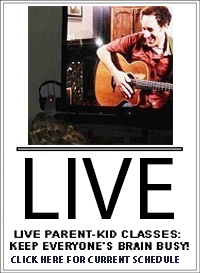One of the most exciting elements of samba is the onslaught of percussion instruments ensembles bring forth when they perform. While every instrument has its own sound and serves its own particular purpose, the cumulative effect is meant to so energize a listener that s/he has not choice but to dance. Some of the primary percussion items include the…
— CAIXA:
Very similar to a snare drum, though it has two or four wires/cables/snares that run along the top of the drum, rather than along the bottom like the typical drum kit snare. The caixa is played with drumsticks and either suspended around the neck on a strap or held on the shoulder to send the sharp rhythm out over a procession. Often musicians play several types or caixas with several types of rhythms. Hear the caixa in action.
— CUICA:
The cuica is a Brazilian “talking drum” (or, more descriptively, “laughing drum”). The drum only has one head. The drummer makes the distinct “laughing” sound by putting a hand inside the instrument and rubbing a wet cloth across a resonating cane of bamboo. Listen to the cuica and, if you understand Portuguese, learn about it too.
— SURDO:
The surdo is a large bass drum that provides the deep, underlying percussive motion for a procession. Performers tune two surdos to different notes and play them in both complementary rhythm and tone, emphasizing the downbeats of the measure. A third surdo plays a rhythm, known as a “cutter,” between the first two surdo beats. Watch some surdo drums at work in the forefront of this performance by PhillyBloco.
— PANDEIRO:
The pandeiro is a kind of tambourine that has a single head and jingles (“pratinelas”) arranged in pairs around its frame. Some masterful pandeiro playing.
— TAMBORIM:
A small single-headed hand drum hit by a thin stick to make a sharp sound that cuts across all the other percussion, usually on an off-beat. Often the tamborim players lead the procession. Watch the smiling Tamborim Unidos da Tijuca in motion in 2009.
— TIMBAL
(also spelled as TIMBAU): The timbal is a conical Brazilian kettle drum most often found in Bahia. (Not to be confused with the Cuban timbales.) Watch timbal drummers on the move with Percussao Brasileira.
More information:
The History of Samba | Want to learn to samba? Start here. | Want your baby to teach you how to samba? Start here.
COUNTRY: Brazil
KEY INSTRUMENTS: Agogô, Banjo (4-string), Bass, Caixa, Cavaquinho, Chocalho, Cuíca, Ganza, Güiro, Hand-repique, Pandeiro, Repinique, Saxophone, Surdo, Tamborim, Tantã, Trombone, Trumpet
SONG ON AATW: LATIN AMERICA CD: Bambo du Bambu
[mappress mapid=”16″ center=”-8, -60″ zoom=”3″]





Comments are closed.